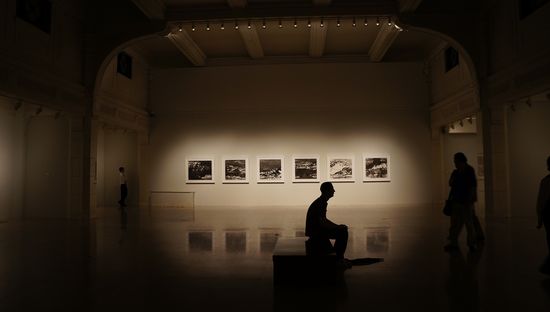A Quick Dive Into the State of Arts-Related Venture Philanthropy
/
Art Basel recently convened some of the most thoughtful and influential players in the arts philanthropy world to discuss the state of what they call "venture philanthropy" as it applies to the arts.
You can check out the entire hour-long discussion here. However, if you're running late for a lunch date, we've taken the liberty of synthesizing some of the key takeaways and, as an added bonus, juxtaposing them with some applicable IP coverage. So let's get right down to it.
Donors want to see a relative return on investment—According to moderator Scott Stover, Art Basel's President of Global Art Development, "venture philanthropists" want some sort of "measurable impact." What's more, they want to make apples-to-apples comparisons, weighing the return on giving $X to Cause A versus Cause B.
Nonprofits in the health and education sector have been ahead of the curve on this, and so Stover turned to the work of the L.A.-based Weingart Center, a provider of homeless services. The center encourages donors to invest in solving the homeless problem because it's in their moral and financial best interests. According to the center, a $10,000 donation is a net gain over the $35,000 the city of Los Angeles spends to leave someone on the streets.
Bottom line? According to Stover, the future of arts philanthropy is inextricably linked to organizations' ability to develop a framework to measure relative impact.
The measurement challenge is particularly acute as millennials age—Stover corroborated an oft-cited theory here at IP: Metrics-crazed millennials aren't particularly jazzed (pun intended) about the arts. The good news is that as millennials age, organizations will have opportunities to articulate the value of the arts. What's more, who knows, maybe millennials' rigorous attachment to performance metrics will be softened as they approach the ripe old age of 40. Stranger things have happened, right?
Nonetheless, we're looking at a distinct psychographic profile compared to what we've seen in the past. Millennials, according to Stover, are "no longer convinced of the same 'ask' of the previous generation."
Donors want the arts to support a cross-over social purpose—Again, no surprise here. As we've repeatedly noted, funders are no longer content with having a painting hang on a wall (not that there's anything wrong with that). They want change. Yet while robust IP coverage has focused on the "artist as activist" to solve intractable social problems, Rockefeller Philanthropy Advisors President and CEO Melissa Berman suggests that donors also want the arts to support physical and mental well-being.
Examples include helping soldiers with PTSD and Alzheimer'spatients, and supporting ongoing education. (And while we're on the topic, let's mention the theraputic benefit of art in hospitals.)
Creative placemaking's popularity shows no signs of waning—While funders including ArtPlace America, Kresge, and Surdna are keen on creative placemaking, we've devoted some time to the fact that no one can truly agree on a catch-all definition for the term. Berman provides one, and it's this: "The role of art in sustaining a healthy and thriving community." Clean, succinct, and helpful.
And so the donors Berman has been talking to are increasingly intrigued by leveraging art centers and art places where "social capital can develop."
Donors are drawn to artists who embrace an entrepreneurial spirit—If art is supposed to serve a cross-over social purpose, artists, by that very definition, need to expand their skill set. They need effectively leverage—quoting Berman again—"capital and financial instruments" that have traditionally been available to their non-artist small business brethren. (In a way, this expanded job description reminds us of Mellon's next-generation vision for museum curators.)
"Hybrid spaces" are becoming increasingly popular—Panelist Stephen Reily, the Chair-Elect of Creative Capital, noted that the "most fertile space" for nonprofits is to push into "hybrid spaces" and "spaces traditionally held by for-profits." He points to the New York City-based New Inc. as a perfect example.
An experimental initiative of the New Museum, NEW INC is a shared workspace and professional development program that brings together more than 100 cultural practitioners and creative entrepreneurs, including anchor tenants Columbia University’s GSAPP Incubator and Rhizome.
We could go on, but we imagine your lunch date is anxiously awaiting your arrival, killing time playing Pokémon Go over a cup of coffee that's getting more lukewarm by the minute.
So bookmark this link and check our the entire conversation in its entirety if and when time allows.








